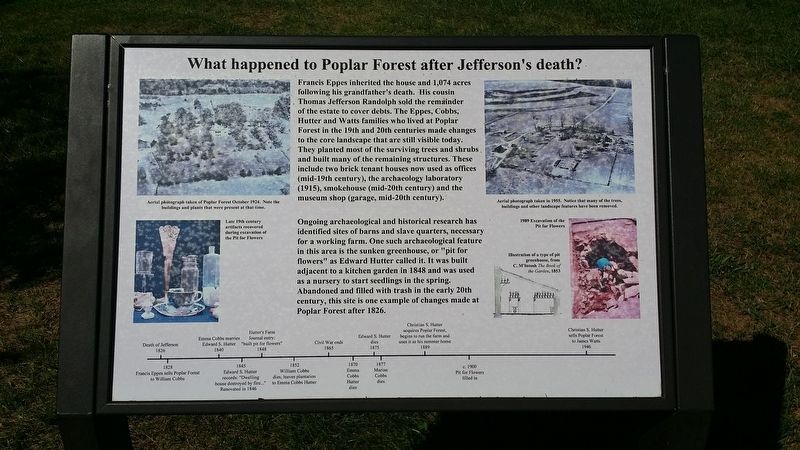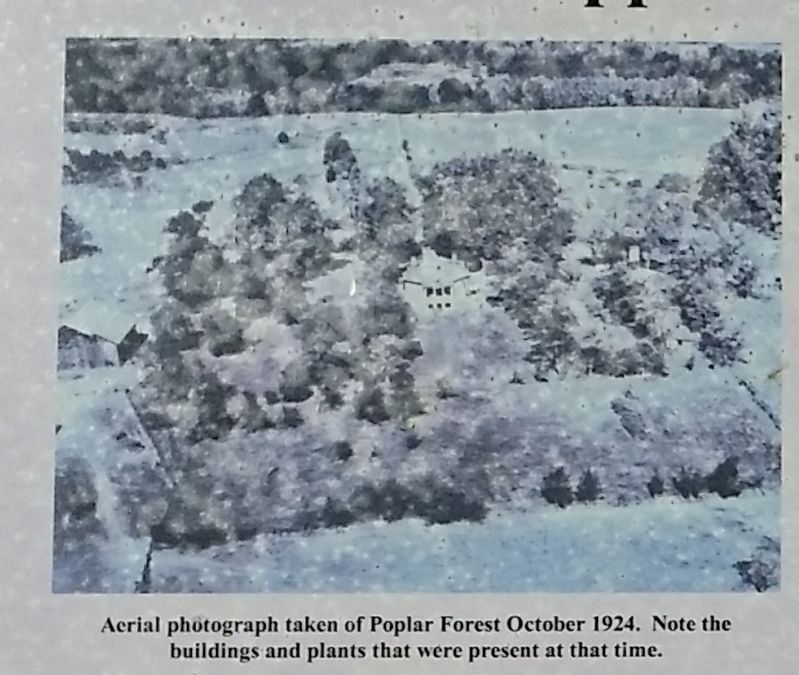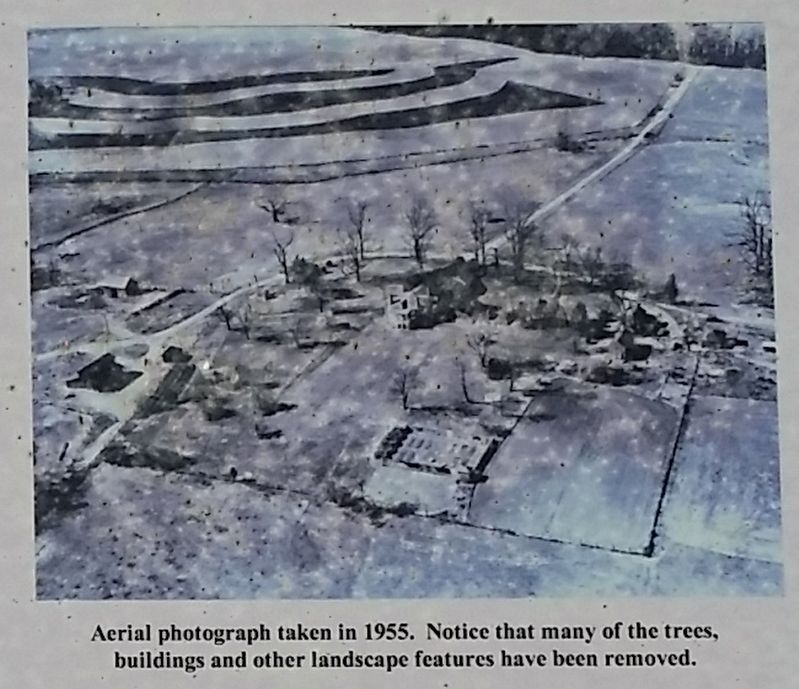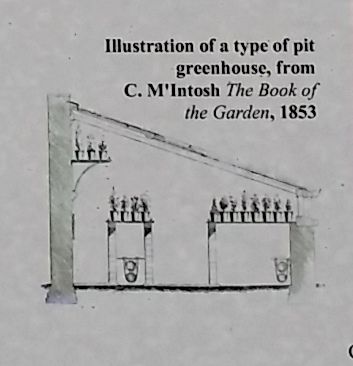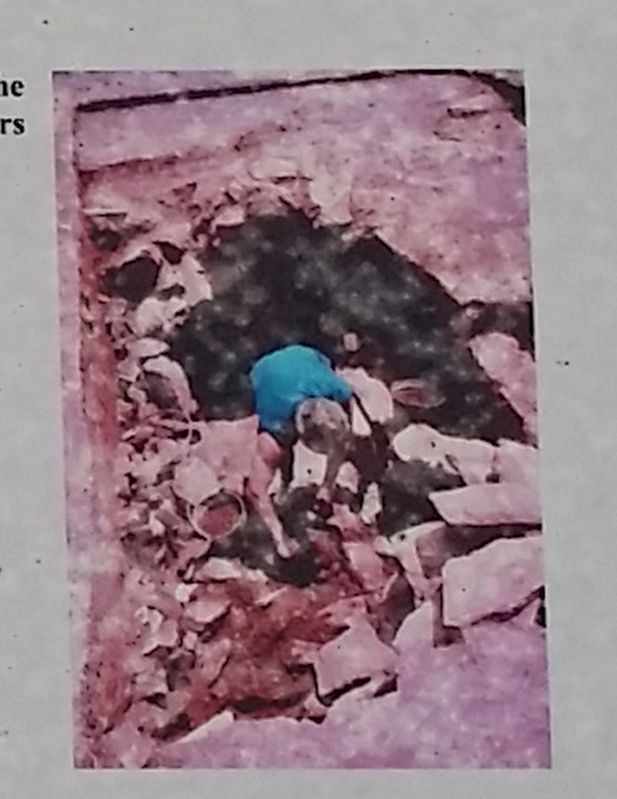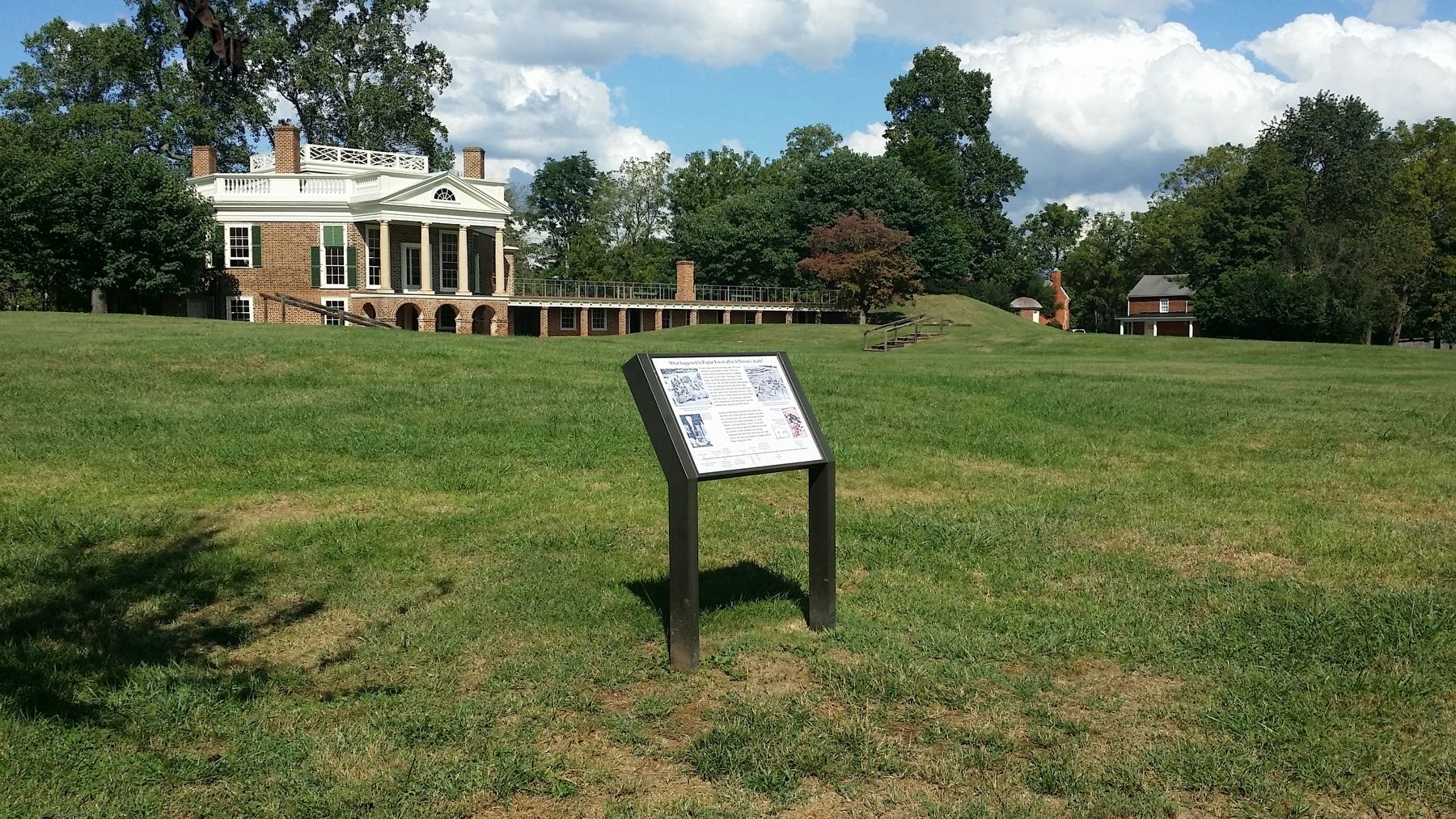Forest in Bedford County, Virginia — The American South (Mid-Atlantic)
What happened to Poplar Forest after Jefferson's death?
Inscription.
Francis Eppes inherited the house and 1,074 acres following his grandfather's death. His cousin Thomas Jefferson Randolph sold the remainder of the estate to cover debts. The Eppes, Cobbs, Hutter and Watts families who lived at Poplar Forest in the 19th and 20th centuries made changes to the core landscape that are still visible today. They planted most of the surviving trees and shrubs and built many of the remaining structures. These include two brick tenant houses now used as offices (mid-19th century), the archaeology laboratory (1915), smokehouse (mid-20th century) and the museum shop (garage, mid-20th century).
Ongoing archaeological and historical research has identified sites of barns and slave quarters, necessary for a working farm. One such archaeological feature in this area is the sunken greenhouse, or "pit for flowers" as Edward Hutter called it. It was built adjacent to a kitchen garden in 1848 and was used as a nursery to start seedlings in the spring. Abandoned and filled with trash in the early 20th century, this site is one example of changes made at Poplar Forest after 1826.
(Timeline:)
1826
Death of Jefferson
1828
Francis Eppes sells Poplar Forest to William Cobbs
1840
Emma Cobbs marries Edward S. Hutter
1845
Edward S. Hutter records: "Dwelling house destroyed by fire..."
Renovated in 1846
1848
Hutter's Farm Journal entry: "built pit for flowers"
1852
William Cobbs dies, leaves plantation to Emma Cobbs Hutter
1865
Civil War ends
1870
Emma Cobbs Flutter dies
1875
Edward S. Hutter dies
1877
Marian Cobbs dies
1889
Christian S. Hutter acquires Poplar Forest, begins to run the farm and uses it as his summer home
c. 1900
Pit for Flowers filled in
1946
Christian S. Hutter sells Poplar Forest to James Watts
Topics. This historical marker is listed in these topic lists: Architecture • Horticulture & Forestry • Man-Made Features • Settlements & Settlers. A significant historical year for this entry is 1826.
Location. This marker has been replaced by another marker nearby. It was located near 37° 20.844′ N, 79° 15.89′ W. Marker was in Forest, Virginia, in Bedford County. Marker could be reached from Bateman Bridge Road. Located on the grounds of Thomas Jefferson's Poplar Forest. Touch for map. Marker was in this post office area: Forest VA 24551, United States of America. Touch for directions.
Other nearby markers. At least 8 other markers are within 3 miles of this location, measured as the crow flies. Crafting a Masterpiece, Longing for Home (here, next to this marker); “I have this summer built a wing of offices...”
(within shouting distance of this marker); Mounds Made of Ideas and Sweat (within shouting distance of this marker); Poplar Forest Planting Memorandum 1812 (within shouting distance of this marker); Transforming a Plantation into a Private Retreat, 1806—1826 (about 300 feet away, measured in a direct line); Plantation Worker Housing (about 400 feet away); "A Culture Productive of Infinite Wretchedness” (about 400 feet away); St. Stephen's Church (approx. 2.4 miles away). Touch for a list and map of all markers in Forest.
Related marker. Click here for another marker that is related to this marker. New Marker At This Location titled "Crafting a Masterpiece, Longing for Home".
Credits. This page was last revised on May 19, 2022. It was originally submitted on November 19, 2016, by Michael C. Wilcox of Winston-Salem, North Carolina. This page has been viewed 445 times since then and 35 times this year. Photos: 1, 2, 3, 4, 5, 6. submitted on November 19, 2016, by Michael C. Wilcox of Winston-Salem, North Carolina.
